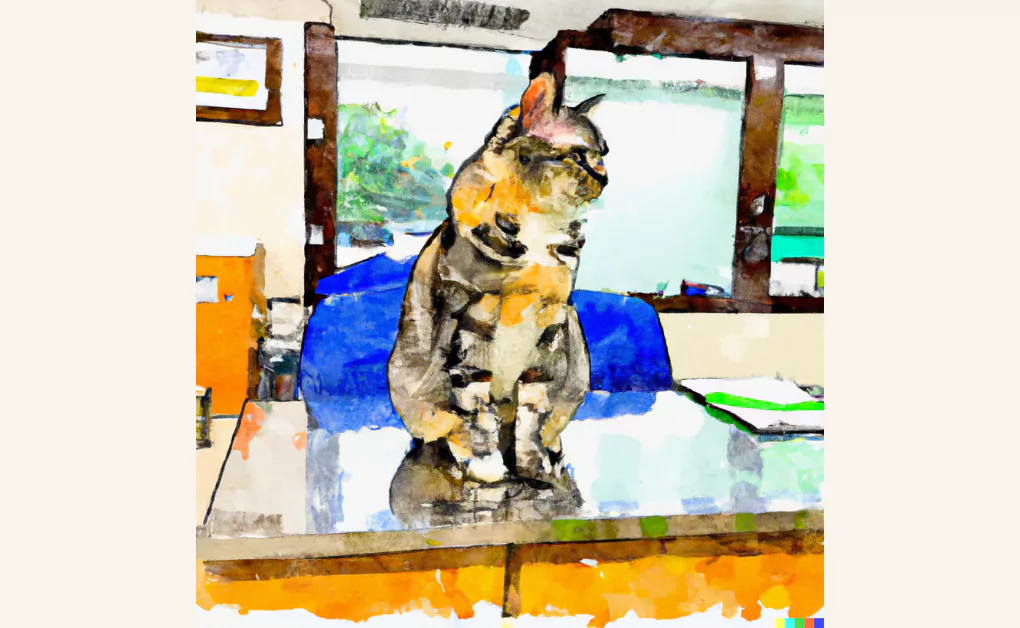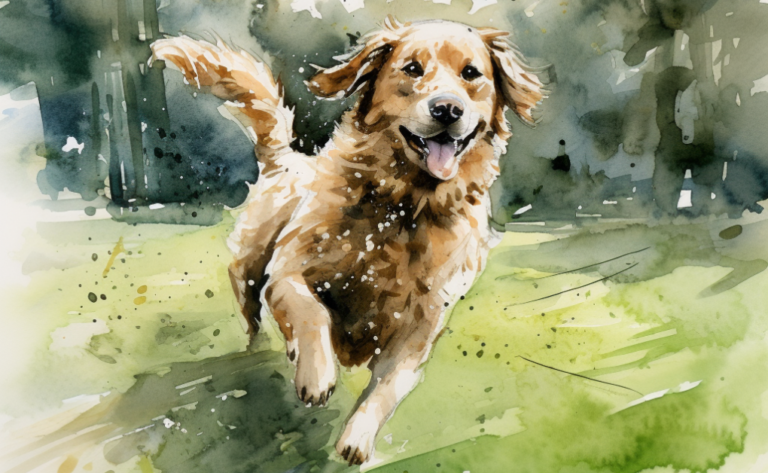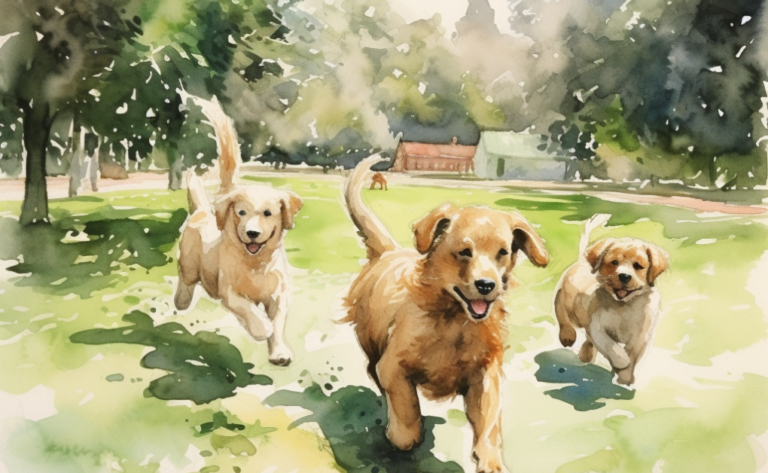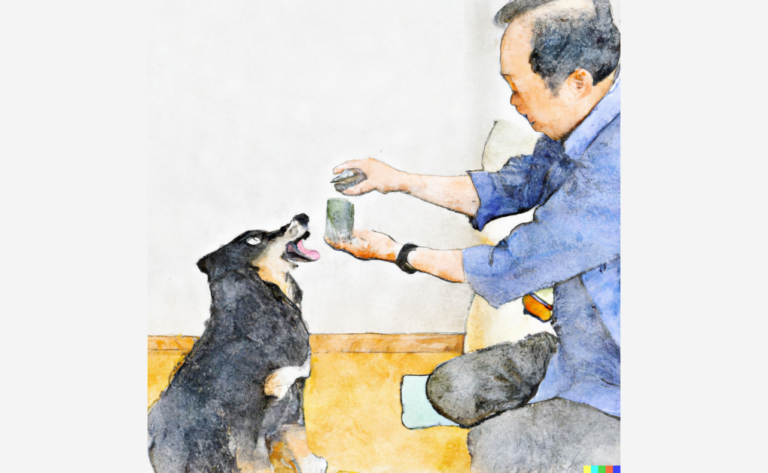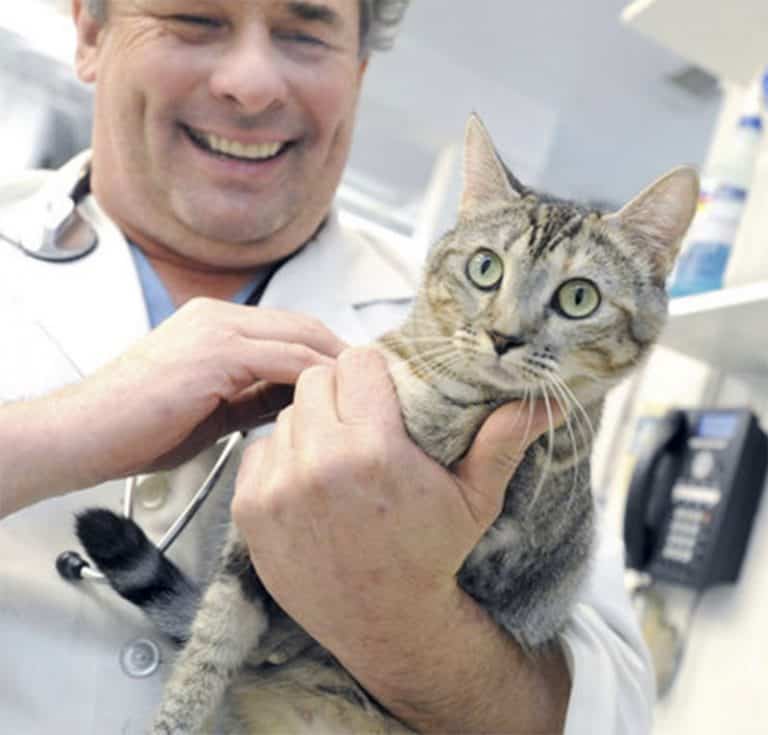Your Cat’s Trip to the Veterinary Hospital
Introduction
For pet owners like Emily, taking her beloved feline companion, Whiskers, to the veterinary hospital is always a daunting experience. The anxiety of the unknown, coupled with Whiskers’ evident distress, makes each visit a challenging ordeal.
The veterinarian can be a scary experience for both cats and their owners. Picture your beloved kitty wandering around an unfamiliar office, stressed and exhausted from all the poking and prodding.
The preparation for this trip may seem daunting initially, but it doesn’t have to be. With a few simple tips, you’ll be able to give your cat the best possible care before, during, and after their vet visits.
Veterinary Trips Can Be Stressful for Cats.
Veterinary trips can be stressful to cats as they become easily stressed when taken out of their comfort zone. In addition, visiting the veterinarian is a particularly overwhelming experience for cats, as they are exposed to unfamiliar sights, smells, and people. This combination of factors can cause a cat to become frightened or stressed.
Vet visits can be anxious for cats and their owners alike, but it doesn’t have to be that way. To make vet visits safe and stress-free for our furry friends, it’s essential to prepare your cat well in advance by introducing them to the carrier they will be traveling in.
Additionally, providing treats during the visit can help distract your cat from potential stressors. Finally, it’s essential to stay calm, so your cat does not pick up on negative energy from you. With these tips in mind, your cat’s trip to the vet can be a positive experience.
The Importance of Putting Your Cat in a Carrier
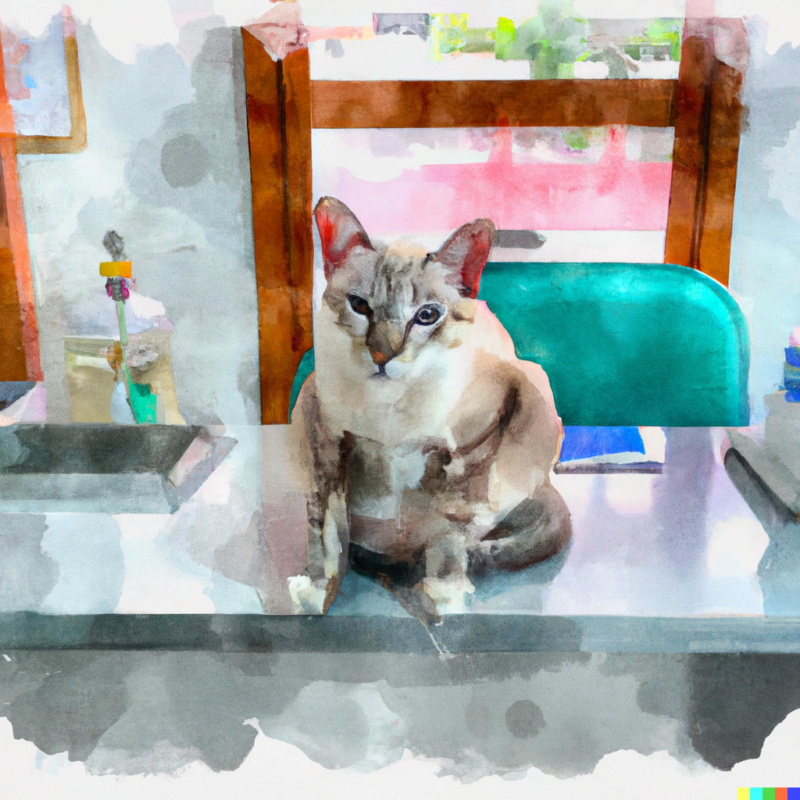
Having a pet can be a wonderful experience, but it is essential to remember that they need special care and attention. One of the most important things to consider when caring for a cat is how to transport them safely. It is the most secure and convenient method for animals to travel. A carrier will protect your cat from being bothered by other curious pets and make them feel less vulnerable. Holding a cat in your arms can lead to injury or escape if they become frightened and leap out of your arms.
To make transporting easier for your cat, it is essential to train them to like their carrier by leaving it out all the time with a towel or blanket inside with a bit of food or a few toys. Practice short car rides to get your cat used to the movement. Then, secure the carrier in the back seat and provide a cozy atmosphere with a towel inside and on top of the page. Talk to your cat in a calm voice and place a familiar towel.
How to Choose Carriers for Your Cat
When choosing a soft carrier for your cat, it is essential to consider the airline’s size and how much room your cat will need while inside. Also, include plenty of soft blankets or towels on the page since this can help provide comfort and security when facing unfamiliar surroundings. Treats can also come in handy during long car rides – these can keep cats occupied while calming their nerves by providing something delicious to focus on instead of fear-inducing situations.
The best carrier for transporting your cats is strong, lightweight, and waterproof, with a large opening and quick-release fasteners.
- Soft carriers are made with firm, but flexible materials and are less bulky than hard plastic carriers. They may have multiple openings but can be harder to clean and not as supportive or sturdy as hard plastic carriers.
It is essential to choose a comfortable carrier for your pet and ensure it has a towel or blanket in the bottom to absorb any fluids. Also, it would be a good idea to bring a spare blanket and plastic bag in case of an accident.
- Cardboard carriers should only be used as a quick form of transport since they are not very durable.
- Hard plastic carriers provide more support and stability than soft-sided ones. However, some cats may be able to push their way out if the airline is zipped closed.
- Wire cages offer good ventilation but can be challenging to clean due to their intricate design. Ultimately, the best type of carrier for your cat will depend on its size and personality.
Tips on How to Put Your Cat Into a Carrier
Cats can be challenging to transport, especially when put into a cat carrier. Therefore, it’s essential to ensure your cat is comfortable and secure on the page before attempting to take them anywhere. You can also spritz the page with Feliway® to create a sense of familiarity and security and make it smell familiar by placing a blanket, towel, or old item of clothing in it. Here are some tips to help your cat get into its carrier.
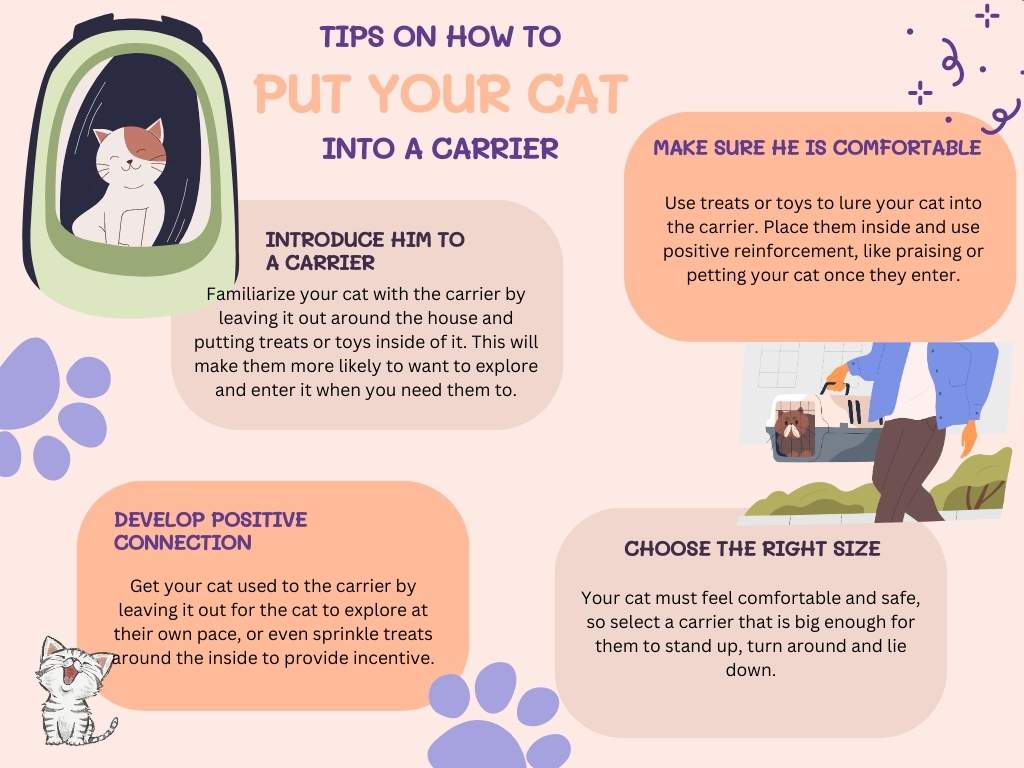
Pack Your Cat’s Essentials.
When packing for a trip with your cat, there are several important details to consider. First, gathering your cat’s medical documents, food, water from home, and litter is essential. This will ensure that your cat has access to the same diet and environment they are used to while on the road.
Also, please ensure that your cat is always wearing identification. A collar with an ID tag is a great way to ensure that if your pet gets lost during the journey, it can be identified and returned safely. Consider also getting a microchip for permanent identification in case the collar is removed or lost.
Finally, consider making a temporary ID tag with the address and phone number of the final destination in case you get separated from your pet during travel. This will help ensure that if something unexpected happens during transit, your pet can still be reunited with you quickly and safely.
Provide Treats and Praise to Your Cat.
To make the visit as positive as possible, offering treats and praise to your cat throughout the journey is essential. Treats are an excellent way to reward your pet for good behavior and help them stay calm during their appointment. Providing treats during the visit will also help build positive associations with all aspects of the vet visit, making future visits easier.
In addition to offering treats, it is essential to provide plenty of praise throughout the journey. The credit helps reinforce good behavior and lets your pet know they are doing something right. In addition, positive reinforcement is critical in helping your pet feel comfortable at the vet’s office. Be sure to give lots of verbal encouragement and physical affection so that they know they are safe and loved no matter what happens at their appointment.
Consider Calming Sprays
Anxious cats can make it difficult to perform necessary examinations. To help reduce anxiety and stress in cats, we advise pet owners to use calming sprays or medications that may be recommended before a visit. These products are designed to relax cats during their vet visits, making them more comfortable and cooperative.
Your veterinarian may recommend giving your cat a prescription drug before the visit if their fears or stress are particularly intense. However, most sedatives have drawbacks and may not be suitable for your cat. In addition, natural products claiming to treat anxiety are not always safe for cats, so it is essential to speak to your veterinarian for more information before using any calming spray or medication.
What to Do When at the Vet Clinic?
When you arrive at the animal hospital, the first thing to do is check in with the front desk. Could you tell them why your cat is there and bring all necessary paperwork, such as vaccination records and health check-up forms?
Once you’ve finished your check-in, please sit in the waiting area and wait for a veterinary assistant to escort your cat back to an exam room. Please let the receptionist know if you need anything during your stay (such as additional forms or payment options), and they will assist you.
Wait for your veterinarian to call you into an exam room. During this time, keep your cat away from other animals or noisy areas, as cats find unfamiliar environments overwhelming. Once inside the exam room, let your veterinarian do their job while offering comfort to your pet. Please don’t hesitate to ask any questions about treatment options and medications should they come up during the visit.
By taking these simple steps, you can ensure that your cat has a comfortable and safe experience at the clinic. It is also important to remember that cats are sensitive creatures and can become easily overwhelmed by unfamiliar environments or loud noises. Therefore, preparing your cat for a visit and providing a calm and reassuring atmosphere can help make the experience less stressful.
Frequently Asked Questions
Disclaimer: The information provided on this veterinary website is intended for general educational purposes only and should not be considered as a substitute for professional veterinary advice, diagnosis, or treatment. Always consult a licensed veterinarian for any concerns or questions regarding the health and well-being of your pet. This website does not claim to cover every possible situation or provide exhaustive knowledge on the subjects presented. The owners and contributors of this website are not responsible for any harm or loss that may result from the use or misuse of the information provided herein.

